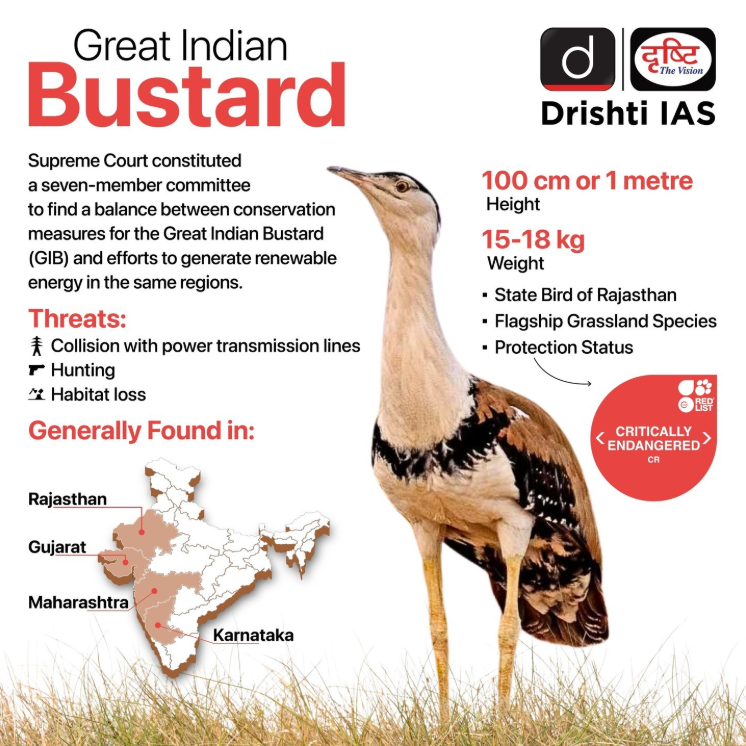Rapid Fire
Great Indian Bustard
- 10 Jun 2025
- 2 min read
The Rajasthan Forest Department named newly hatched Great Indian Bustard (GIB) (Ardeotis nigriceps) chicks Sindoor, Vyom, Mishri, and Sophia to honour Operation Sindoor and military personnel involved.
- GIB, Rajasthan’s state bird, is India’s most critically endangered bird. It is one of the heaviest flying birds in the world, and mainly found in Rajasthan’s Thar Desert, with small populations in Gujarat, Maharashtra, Karnataka, and Andhra Pradesh.
- GIB is one among four bustard species found in India, alongside the Lesser Florican, Bengal Florican, and Macqueen's Bustard.
- GIB is omnivorous and vulnerable to power line collisions due to lack of frontal vision.
- Ecological Importance: GIB acts as an indicator species, it reflects the health of grassland ecosystems. Their decline signals degradation of native grasslands.
- Protection Status: IUCN Red List (Critically Endangered), CITES (Appendix 1), Convention on Migratory Species (CMS) (Appendix I), and Wildlife (Protection) Act, 1972 (Schedule I).
- Threats: Habitat loss from agriculture, mining, and infrastructure, along with collisions with power lines (the leading cause of adult mortality) threaten the GIB.
- Poaching has declined but human disturbance and unsustainable land use continue to impact the species.
- Conservation Efforts: Project GIB (launched in 2018) a joint initiative of the Ministry of Environment, Wildlife Institute of India, and Rajasthan Forest Department
- Captive breeding centres in Sudasari and Sam, Jaisalmer, use AI-enabled monitoring, incubators, and sensor-based systems to improve chick survival.
| Read more: Great Indian Bustards |







